The Four Satir Types (Survival Stances)
Virginia Satir identified four categories of communication—or stances—that people tend to adopt when under stress. Each category is marked by a characteristic posture, specific gestures, accompanying bodily feelings, and a distinct syntax.
Overview of the Four Satir Types
There is a 91-minute recording on this topic in our Online Academy that you can watch in full immediately. Just click the “to the video” button to learn more.
| Communication Style (Role) | Description | Access Cues |
|---|---|---|
| The Placater |
“I’m happy I’m even allowed to be here at all.” Uses qualifiers: if, only, just, at all Many subjunctives: could, would, etc. Distortion via mind reading |
Posture: slumped, wavering, head held far up, a pleading hand extended forward Voice: whiny, squeaky, constricted |
| The Blamer | “If you weren’t here, the world would be just fine!” Universal quantifiers: all, everyone, never. Implied causality (if/then, because …). Uses negative questions: Why don’t you…? Distortion via asserting causal links. |
Posture: tense, contorted, shallow pressed breathing Voice: loud, shrill, hard |
| The Distracter | “Nothing comes to mind, or—wait, hang on—yesterday I met an actor who also didn’t know…” Random use of all three patterns above, missing references and links, rapid switching between patterns. |
Posture: uncoordinated movements of head, trunk, limbs Voice: flighty, fast, animated |
| The Computer (Over-Rationalizer) | “Upon calm and objective consideration, one can ascertain that …” Deletion of reference indices, nominalizations, and nouns without referents: it, one, people, etc.; deletion of subject/subject reference. |
Posture: motionless, tense, low reactivity Voice: monotonous, dry |
1. Placating
Placating is one of the four primary ways we react when we feel our survival is threatened.
When we placate, we disregard our own sense of worth, hand our power over to someone else, and say yes to everything. A person who tends to placate considers others and the context, yet neglects their own true feelings.
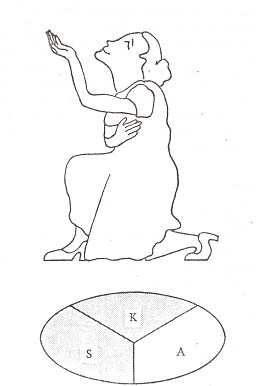
Placating pretends to be pleasing—which most cultures and families value highly.
But placating differs from congruently trying to bring someone joy. We placate at the expense of our own worth. When placating, we discount our self-esteem and send the message that we are not important.
Placating Response
- Words: agreeable (“Whatever you want is fine. I only exist to make you happy.”)
- Body: conciliatory (“I am helpless.”)
- Thoughts & feelings: (“I feel like a nothing; without them I’m lost. I’m not worth anything.”)
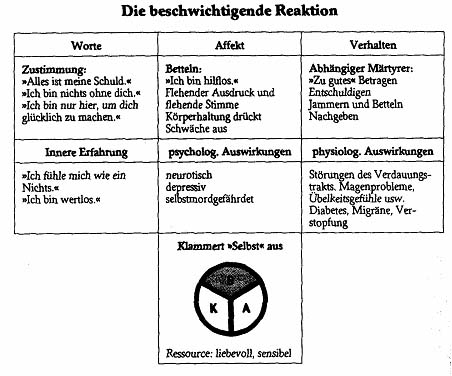
The placater speaks in a ingratiating way; tries to please; apologizes; and never contradicts anything—always a yes-sayer.
They speak as if incapable of doing anything for themselves and must always find someone to approve of them…
2. Blaming
Blaming is the direct opposite of placating.
The blaming stance is an incongruent reflection of the social rule that we must stand up for ourselves and accept no excuses, inconveniences, or insults from anyone—in short, we must never be “weak.”
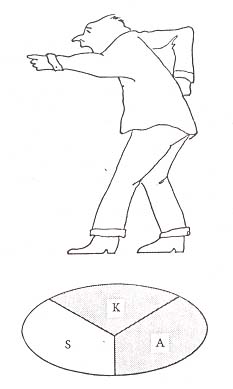
To protect ourselves, we attack others or circumstances and assign blame.
When blaming, others don’t count—only we and the context do. People who adopt the blaming stance are often seen as hostile, tyrannical, nagging, or aggressive.
Blaming Response
- Words: disapproving (“You never do anything right. What’s wrong with you?”)
- Body: accusatory, demanding (“I’m the boss here.”)
- Thoughts & feelings: “I’m lonely and unsuccessful.”
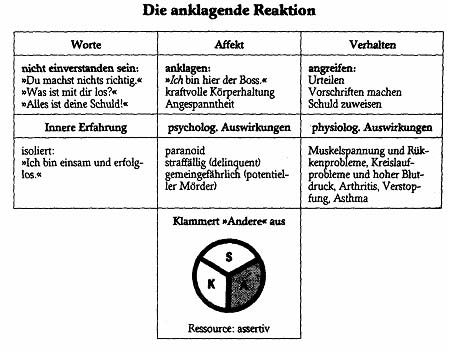
The blamer is a “fault-finder,” a dictator, a boss. Arrogant, as if to say: “If you weren’t here, everything would be fine.” …
3. Distracting (Irrelevant Responding)
The fourth survival stance is the irrelevant response, often confused with being entertaining or the class clown. It is the counterpart to the over-rational stance. When people act irrelevantly, they are constantly in motion.
It’s an attempt to distract others’ attention from the real issue at hand.
The distracter generates endless ideas and wants to do myriad things at once.
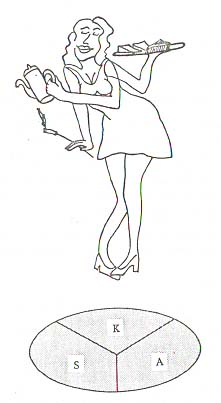
Self, others, and context don’t matter when someone is in the distracter stance. …
Distracting Response
- Words: unrelated, trivial; the words don’t cohere
- Body: angular and pointing in different directions
- Thoughts & feelings: (“No one cares about me. I don’t belong anywhere.”)
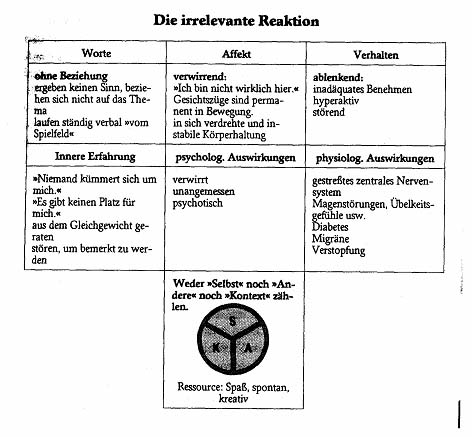
Whatever the distracter says or does has no relation to what anyone else says or does. They never answer a question directly. …
4. Rationalizing
The over-rational communication pattern neglects both self and other.
Over-rational means acting only according to context—mostly on the level of information and logic. To embody this stance, stand upright and rigid, arms at your sides or symmetrically folded, and you’ll soon feel the rigidity.
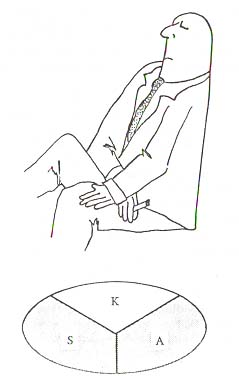
Feet close together; face expressionless. When someone speaks to us, we lecture at length, seemingly wise and dignified. …
Rational Response
- Words: highly reasonable (“Upon careful observation, one might notice the calloused hands of someone present.”)
- Body: motionless, tense (“I am calm, cool, and collected.”)
- Thoughts & feelings: (“I feel slightly exposed.”)
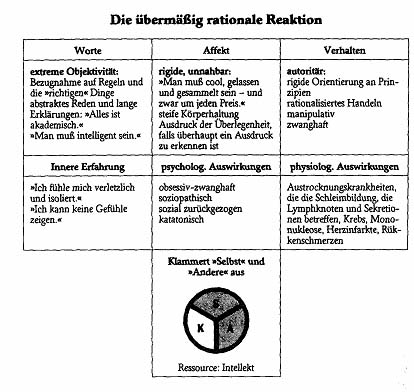
The Computer is correct and reasonable, without a hint of feeling—calm, cool, collected—like a machine or reference book. The voice is dry and monotonous; the words sound abstract. …
Exercise for the Satir Categories
- Exercise in groups of four: simulate a contentious topic (e.g., pros/cons of nuclear power, same-sex marriage, women as Catholic priests, strategies for unemployment). Each Satir type is assigned.
- Each person adopts one role and discusses as Placater, Blamer, Computer, or Distracter for about five minutes; then everyone switches until all have tried each stance once.
- After a full round, debrief: Which role felt most unpleasant? Which was relatively easy? What was the impact on others? How did others’ roles affect you?
- Next, try counter-strategies. One person chooses a stance to explore more deeply and presents an everyday problem for five minutes in that role. The others gently question the role, expanding deleted, distorted, or generalized perceptions. Each role should be explored once.
- Final feedback and group discussion.

 Deutsch
Deutsch English
English Français
Français 中文
中文 Español
Español नहीं
नहीं Русский
Русский